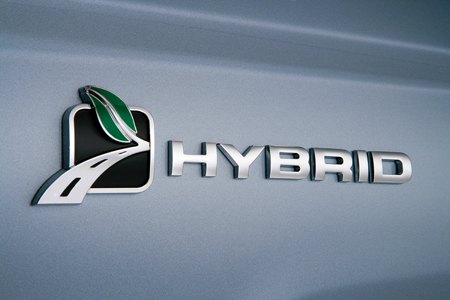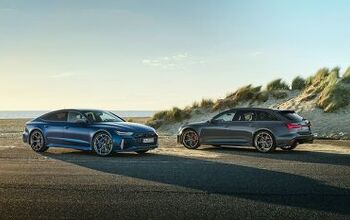Ford Fusion Hybrid: 41mpg and Up to 47mph on Batteries
Ford has a hit on their hands with the Ford Fusion Hybrid– at least from a media standpoint. The autobogosphere is abuzz with the announcement of the gas – electric fusion Fusion’s official EPA stat of 41mpg. Of course, that’s 41mpg in the city and 36mpg on the highway. But a headline’s a headline. More interesting yet, the Fusion hybrid can motor up to 47mph on battery-power. According to Hybrid program leader Praveen Cherian, the extended all-EV mode “allows drivers to maximize fuel efficiently in many driving situations. For example, this would allow drivers to travel around their subdivision and parking areas in all-electric mode.” What’s the speed limit in a subdivision these days? And doesn’t everybody switch off the engine and glide into a parking space (sarcastic driver, closed parking lot)? I know: I’m just being churlish. This is exactly the kind of evolutionary, incremental improvement we’ve been arguing for since the site began. Now, can I be churlish some more?
“When set in tutorial mode, the instrument panel ‘grows’ leaves and vines on-screen to reward fuel-efficient driving. The more leaves and vines that appear, the more efficient the driving behavior is and the more fuel is being saved.”
Is that a killer app or a deal killer? Is cute the new macho? Methinks FoMoCo is of two minds here, as the relevant screen shot is conspicuous by its absence in the PR photo roster. Anyway, I don’t want to deny Detroit’s day in the sun, given the dark, brooding horizon. So here’s the geekery.
* Smaller, lighter nickel-metal hydride battery, which produces 20 percent more power than Ford’s previous hybrid system. The battery’s improved chemistry allows it to be run at a higher temperature and cooled using cabin air.
* New 2.5-liter 4-cylinder engine (155 horsepower / 136 lb.-ft. of torque), which is mated to an electronically controlled continuously variable transmission.
* Enhanced electronic throttle control, which reduces airflow on shutdowns, reducing fueling needs on restarts.
* Smart climate control system, which monitors cabin temperature and only runs the gas engine as needed to heat the cabin. It also includes an electric air conditioning compressor to further minimize engine use.
* Regenerative brake system, which captures the energy normally lost through friction in braking and stores it. Nearly 94 percent energy recovery is achieved by delivering full regenerative braking, which means only 6 percent of braking is through traditional friction brakes
More by Robert Farago
Latest Car Reviews
Read moreLatest Product Reviews
Read moreRecent Comments
- Doug brockman There will be many many people living in apartments without dedicated charging facilities in future who will need personal vehicles to get to work and school and for whom mass transit will be an annoying inconvenience
- Jeff Self driving cars are not ready for prime time.
- Lichtronamo Watch as the non-us based automakers shift more production to Mexico in the future.
- 28-Cars-Later " Electrek recently dug around in Tesla’s online parts catalog and found that the windshield costs a whopping $1,900 to replace.To be fair, that’s around what a Mercedes S-Class or Rivian windshield costs, but the Tesla’s glass is unique because of its shape. It’s also worth noting that most insurance plans have glass replacement options that can make the repair a low- or zero-cost issue. "Now I understand why my insurance is so high despite no claims for years and about 7,500 annual miles between three cars.
- AMcA My theory is that that when the Big 3 gave away the store to the UAW in the last contract, there was a side deal in which the UAW promised to go after the non-organized transplant plants. Even the UAW understands that if the wage differential gets too high it's gonna kill the golden goose.











































Comments
Join the conversation
Wave, Thanks for the explanation, but one of the reasons I was unclear is that the laws of physics prevent any great savings by turning off the motor unless it's a bad design or wasteful driver.
Well the whole hybrid thing is kind of ignorant, its working towards better mileage.. but I'l stick to my early 90s FI econocar that gets mileage in the high 30s-50s on the highway, no expensive battery BS, no 'status' symbol, because those of you thinking that people are simply buying these to be better for the environment are kidding yourselfs.. its the new 'in' thing to be green. Think back to the late 80s early 90s Hondas, Toyotas, and Nissans, all of their compact cars from that era got great mileage.. not 50mpg like the prius or even 60, but i think respectively 35mpg on an entirely gasoline powered engine is pretty good and economical, especially compared to the newer car market in general where 20mpg because acceptible as good mileage.